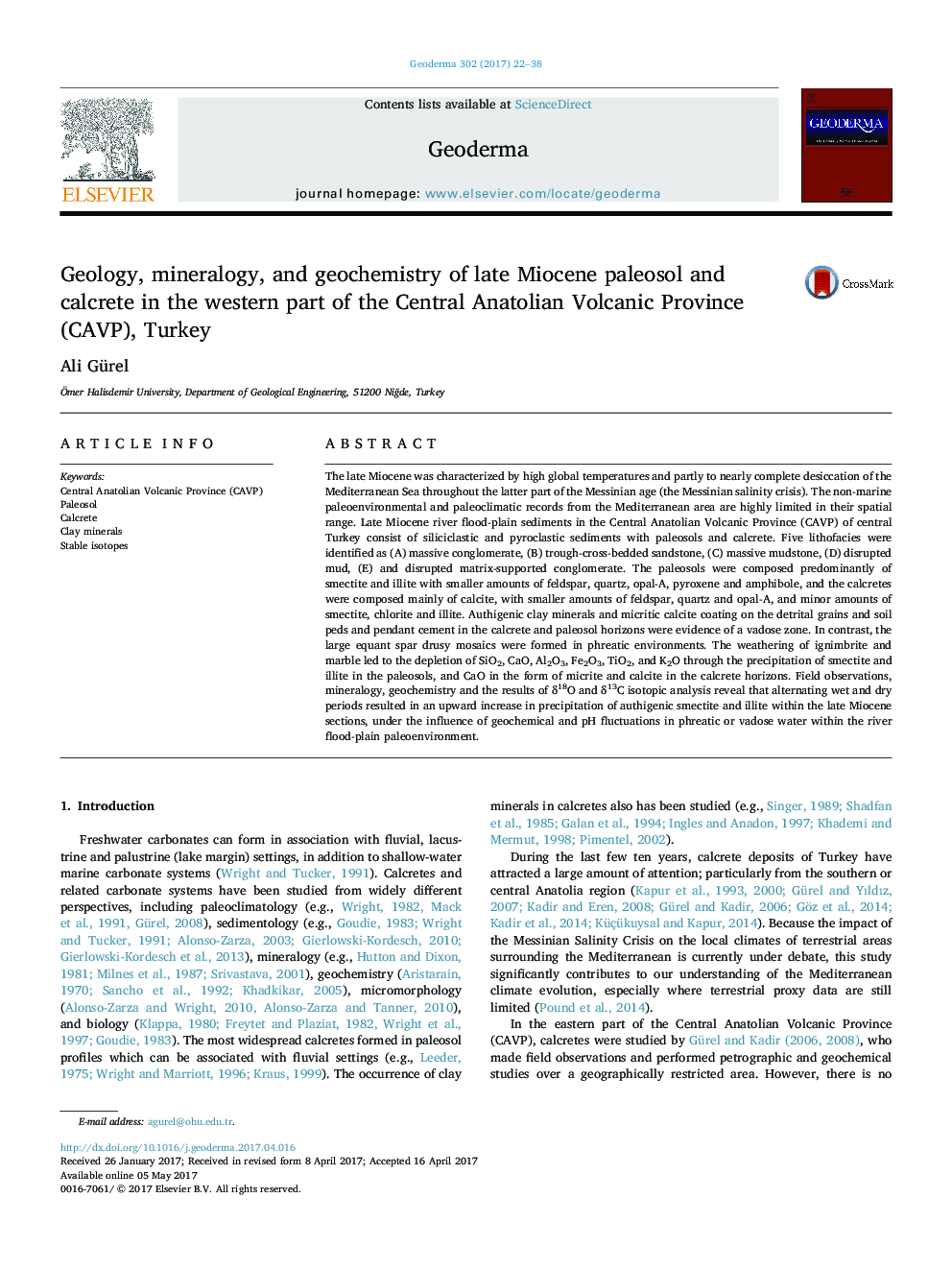| کد مقاله | کد نشریه | سال انتشار | مقاله انگلیسی | نسخه تمام متن |
|---|---|---|---|---|
| 5770258 | 1629415 | 2017 | 17 صفحه PDF | دانلود رایگان |

- The late Miocene paleosol, calcrete profile and associated clay minerals were identified.
- Five lithofacies as A-E, and paleosols as Inceptisol, Aridisol and Vertisols were identified.
- Vertical distribution of mineralogical and chemical contents varies in a wide range.
- Calcrete was cemented during early diagenesis and it did not erase the paleoenvironmental record.
- The δ18O and δ13C isotopic analysis reveal that alternating wet and dry periods during the late Miocene.
The late Miocene was characterized by high global temperatures and partly to nearly complete desiccation of the Mediterranean Sea throughout the latter part of the Messinian age (the Messinian salinity crisis). The non-marine paleoenvironmental and paleoclimatic records from the Mediterranean area are highly limited in their spatial range. Late Miocene river flood-plain sediments in the Central Anatolian Volcanic Province (CAVP) of central Turkey consist of siliciclastic and pyroclastic sediments with paleosols and calcrete. Five lithofacies were identified as (A) massive conglomerate, (B) trough-cross-bedded sandstone, (C) massive mudstone, (D) disrupted mud, (E) and disrupted matrix-supported conglomerate. The paleosols were composed predominantly of smectite and illite with smaller amounts of feldspar, quartz, opal-A, pyroxene and amphibole, and the calcretes were composed mainly of calcite, with smaller amounts of feldspar, quartz and opal-A, and minor amounts of smectite, chlorite and illite. Authigenic clay minerals and micritic calcite coating on the detrital grains and soil peds and pendant cement in the calcrete and paleosol horizons were evidence of a vadose zone. In contrast, the large equant spar drusy mosaics were formed in phreatic environments. The weathering of ignimbrite and marble led to the depletion of SiO2, CaO, Al2O3, Fe2O3, TiO2, and K2O through the precipitation of smectite and illite in the paleosols, and CaO in the form of micrite and calcite in the calcrete horizons. Field observations, mineralogy, geochemistry and the results of δ18O and δ13C isotopic analysis reveal that alternating wet and dry periods resulted in an upward increase in precipitation of authigenic smectite and illite within the late Miocene sections, under the influence of geochemical and pH fluctuations in phreatic or vadose water within the river flood-plain paleoenvironment.
Journal: Geoderma - Volume 302, 15 September 2017, Pages 22-38